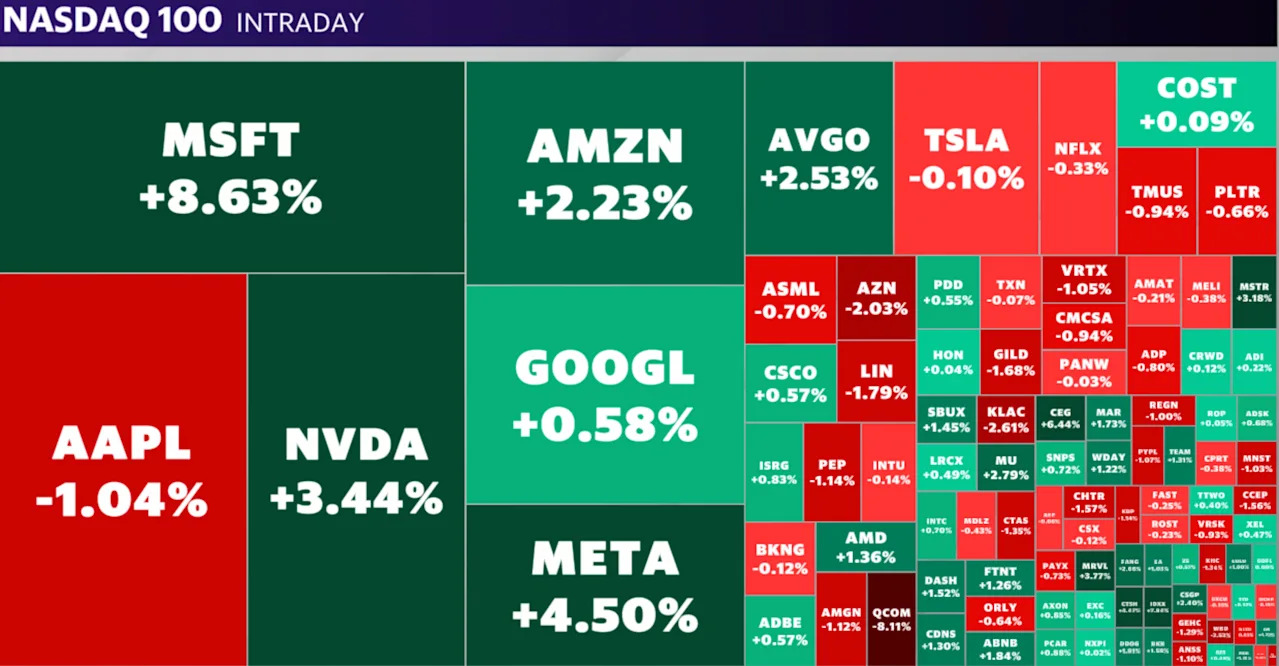How Recent Earnings and Tech Trends Are Shaping Stock Markets in 2025

Stock markets have been on a remarkable journey in 2025, fueled by robust earnings from major technology companies and ongoing shifts in trade policies. Investors worldwide are watching closely as Wall Street reacts to new data, global events, and innovative spending in artificial intelligence (AI). This article explores the recent movements in stock markets, key drivers behind these trends, and what experts predict for the near future.
Tech Giants Drive Stock Markets Higher
Over the past week, the U.S. stock markets have experienced a sustained rally. Leading indices like the S&P 500, Dow Jones Industrial Average, and Nasdaq Composite all closed higher for the eighth consecutive session. This performance has been powered primarily by exceptional earnings reports from Big Tech firms such as Microsoft and Meta Platforms.
According to an AP News report, both Microsoft and Meta exceeded analyst expectations. Strong results in cloud computing and AI applications propelled their stocks upward. Microsoft highlighted double-digit growth in its cloud segment, while Meta credited its advertising revenue boost to new AI tools. These tech gains are significant, as these companies represent a large share of the major indices, amplifying their effect on the broader markets.
The AI Investment Surge and Its Market Impact
The renewed faith in technology stocks extends beyond headline earnings. Giants like Microsoft and Meta have doubled down on AI, announcing major capital expenditures to expand their infrastructure for the coming year. Investopedia reported that Microsoft's leadership reaffirmed an $80 billion commitment to AI infrastructure for 2025. Meta is following suit, expecting to invest up to $72 billion. This trend has fueled optimism across the tech sector and helped revive beaten-down AI-related stocks, including Nvidia and Broadcom.
These bold moves have reassured investors that the AI trade remains vibrant, despite economic and policy headwinds. As a result, stocks in cloud computing, semiconductors, and networking technologies have all seen renewed momentum in global stock markets.
Economic Headwinds and Tariffs: Persistent Market Concerns
Despite the recent rally, challenges remain. Uncertainty over tariff policies, initiated by President Trump's trade agenda, continues to influence market sentiment. Many companies—including Apple, Amazon, and Becton Dickinson—warned that increased tariffs on Chinese imports could pressure their profit margins. For instance, Apple estimated an additional $900 million in costs this quarter due to tariffs, as detailed in coverage by Investopedia.
Other sectors have experienced pressure as well. McDonald’s, a bellwether for consumer confidence, reported weaker U.S. sales, signaling strain on middle-income consumers. Manufacturing activity also contracted again, according to the Institute for Supply Management, highlighting persistent softness in industrial sectors.
Outbound Links: In-Depth Market Analysis
For readers seeking deeper insights into these developments, these resources provide comprehensive coverage:
- Stock market today: Nasdaq surges as AI trade reignites amid Big Tech earnings, Dow, S&P 500 rise for 8th day on Yahoo Finance.
- Microsoft and Meta Platforms lead Wall Street higher from AP News.
What to Watch Next in 2025
As stock markets move forward, all eyes are on upcoming economic data and possible policy shifts. The jobs report remains a key indicator, as any unexpected weakness could alter the market outlook. Meanwhile, the resilience of AI investment suggests technology stocks may continue to shape market directions, even amid broader economic uncertainty.
In conclusion, 2025’s stock markets reflect a dynamic mix of optimism from tech innovation and caution over macroeconomic policies. Investors are advised to stay informed, diversify, and monitor both policy and earnings developments closely. For more detailed updates and ongoing market news, visit Investopedia’s markets section or explore in-depth reporting on AP News.